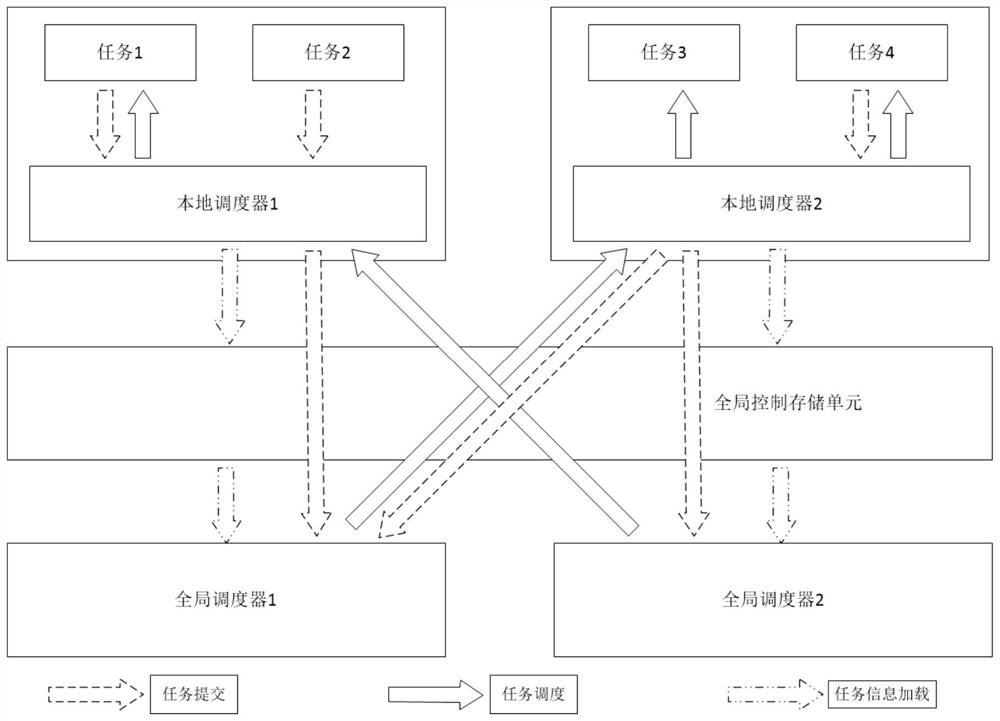Bottom-up distributed scheduling system and method
A scheduling system and bottom-up technology, applied in the field of simulation computing, can solve the problems of large difference in processing capacity, difficult expansion, low efficiency, etc., and achieve the effects of minimum delay, convenient expansion, and fast scheduling speed
- Summary
- Abstract
- Description
- Claims
- Application Information
AI Technical Summary
Problems solved by technology
Method used
Image
Examples
Embodiment Construction
[0032] The present invention will be further described in detail below in conjunction with the accompanying drawings and embodiments. It should be understood that the specific embodiments described here are only used to explain the present invention, but not to limit the present invention. In addition, it should be noted that, for the convenience of description, only some structures related to the present invention are shown in the drawings but not all structures.
[0033] The present invention has the following terms:
[0034] 1. Heterogeneous tasks
[0035] It mainly refers to a collection of tasks with different types of resource requirements and different computational complexities. For example, some tasks require a GPU, some tasks only require a CPU, some tasks take only 1 second to process, and some tasks may take hours or even days to process.
[0036] 2. Scheduler
[0037] The present invention mainly refers to a scheduler in a distributed system, including a task ...
PUM
 Login to View More
Login to View More Abstract
Description
Claims
Application Information
 Login to View More
Login to View More - R&D
- Intellectual Property
- Life Sciences
- Materials
- Tech Scout
- Unparalleled Data Quality
- Higher Quality Content
- 60% Fewer Hallucinations
Browse by: Latest US Patents, China's latest patents, Technical Efficacy Thesaurus, Application Domain, Technology Topic, Popular Technical Reports.
© 2025 PatSnap. All rights reserved.Legal|Privacy policy|Modern Slavery Act Transparency Statement|Sitemap|About US| Contact US: help@patsnap.com

